Today, 8 June, is Bounty Day here on Norfolk Island. It’s a day of celebration for Norfolk Islanders of Pitcairn descent – the day when, in 1856, their forbears first arrived on the island. We were honoured to be invited to join local friends for the Bounty Day picnic lunch in the compound. This is such a great celebration of what it means to be part of the community. It was definitely worth braving the biting chill winds, which felt they had hailed directly from the Antarctic, to share such a special day.
At the beginning of last week, I was finally able to use my camera again to record the damage from the massive swells we have had rolling in, courtesy of this year’s La Niña. The visibility had been about as far as my hand in front of my face for some time, but as it cleared over a period of a couple of days I was able to see the havoc wrought by the waves. I have included a slideshow of some of the recent damage (below). This was on top of quite a bit of damage back in January. It hasn’t been a good year for the poor coral.
Many will say that this is part of the natural order of things for the reef, and, of course, they are quite correct. But sadly, some parts of the reef here are covered in algal growth or are damaged by disease – all caused by the high nutrient levels as a result of the polluted water draining and permeating into the bay areas over many years. This additional, albeit natural, stress on top of the other issues facing the reef is so sad to see. Large coral colonies, some 20 or 30 years old and older, have been destroyed in the space of a few days.
Image credit: Instagram @narwi_sketch
On the 4 June I was lucky enough to spot a salmon-pink Platydoris cinereobranchiata, a type of sea slug, at the Lone Pine side of Emily Bay.
That same day, I also saw three doubleheaders communing together, off the Salt House, quietly grazing away. One was a very large male, terminal phase, while the other two were both primary phase. The surge wrasse, Thalassoma purpureum, were out and about in goodly numbers, and a small flotilla of Bluespotted cornetfish – Fistularia commersonii.
The aatuti (banded scalyfin or Parma polylepis) have been getting assertively territorial, guarding their little patches of algae against all-comers, possibly, I think, because they have been mating.
I was also lucky enough to see two spotted porcupinefish, Diodon hystrix, caught in flagrante delicto (sorry, no photos of this).
And so the circle of life continues.
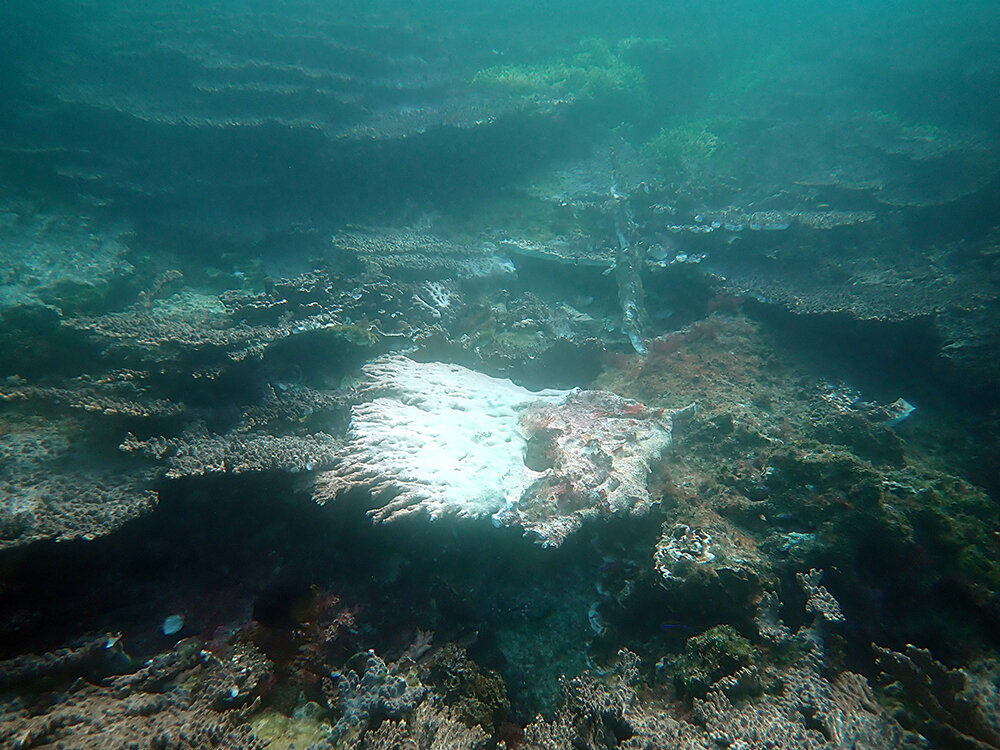
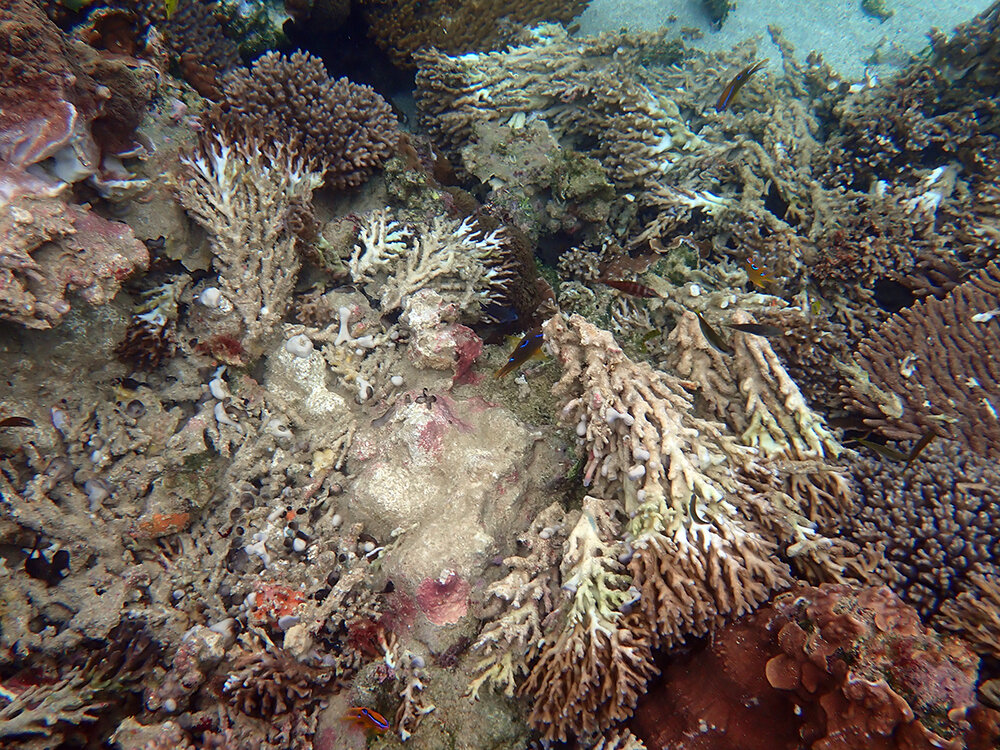

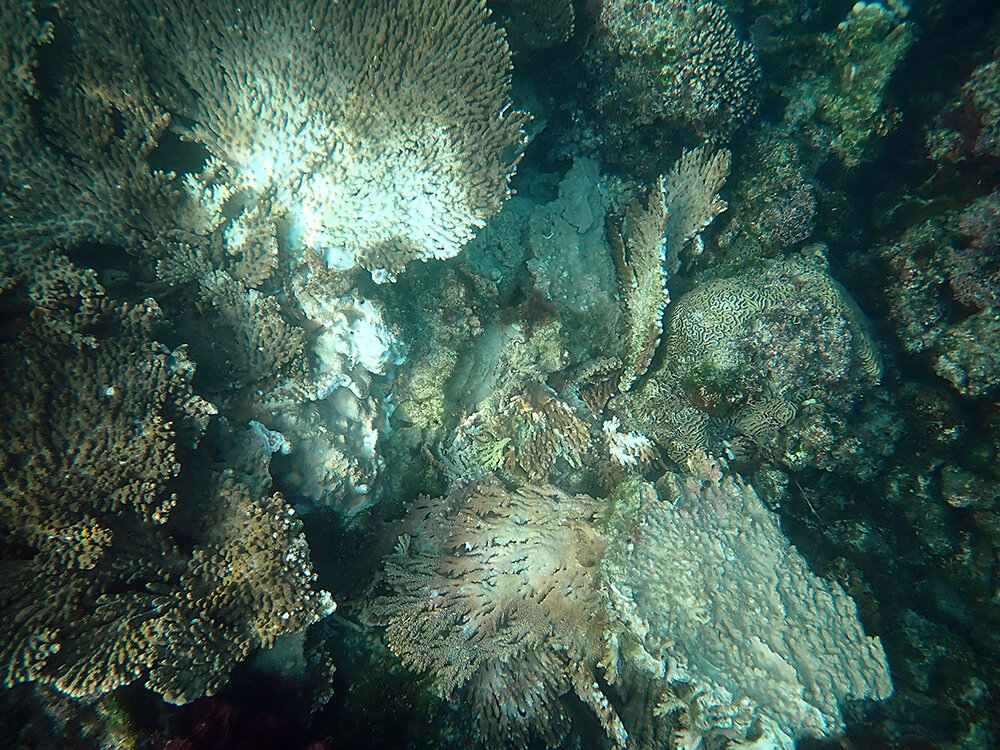
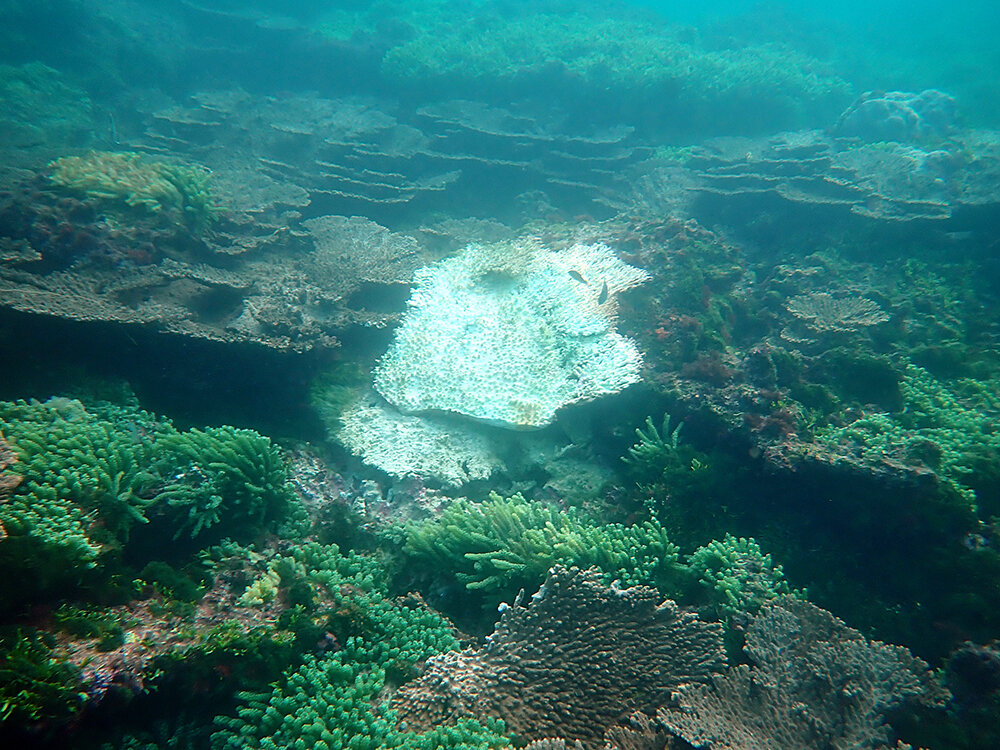
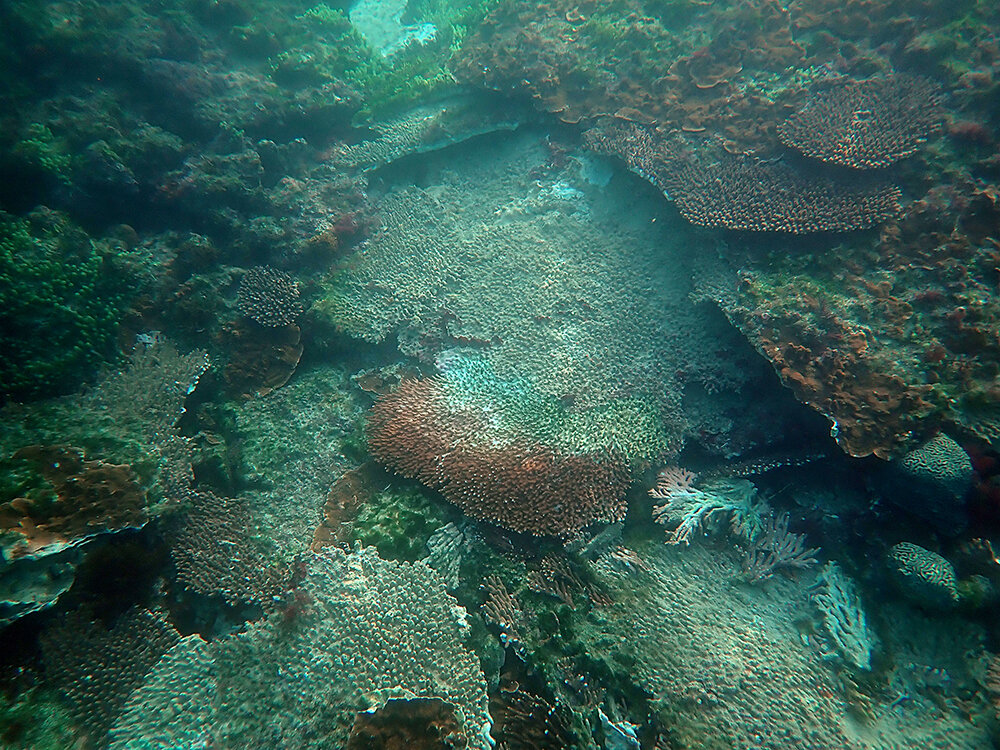


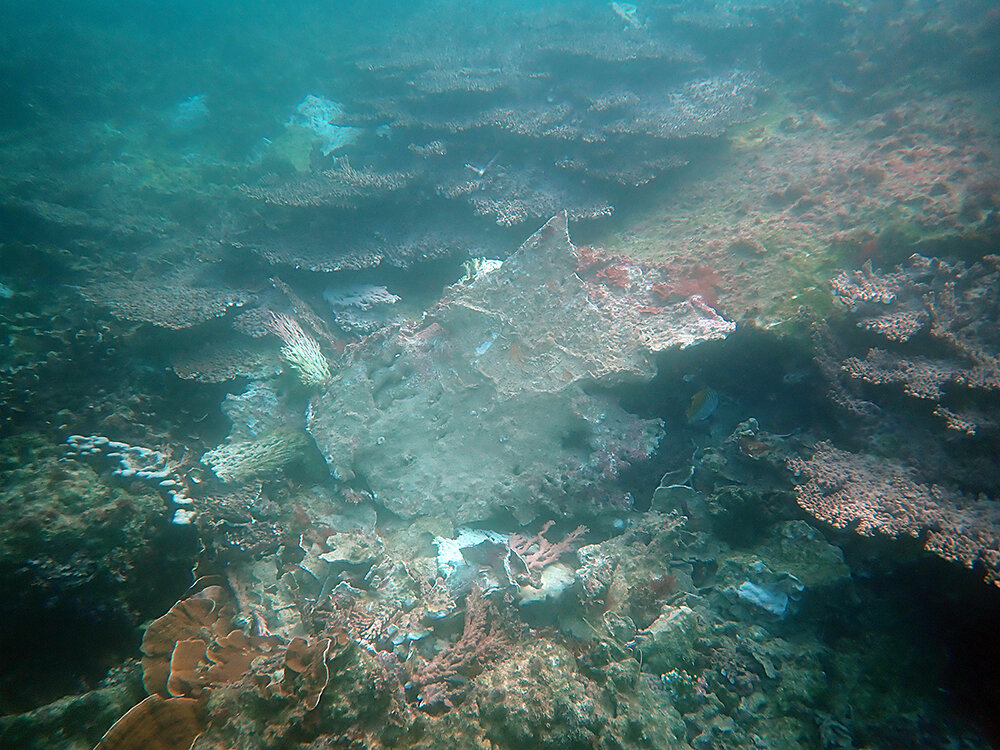

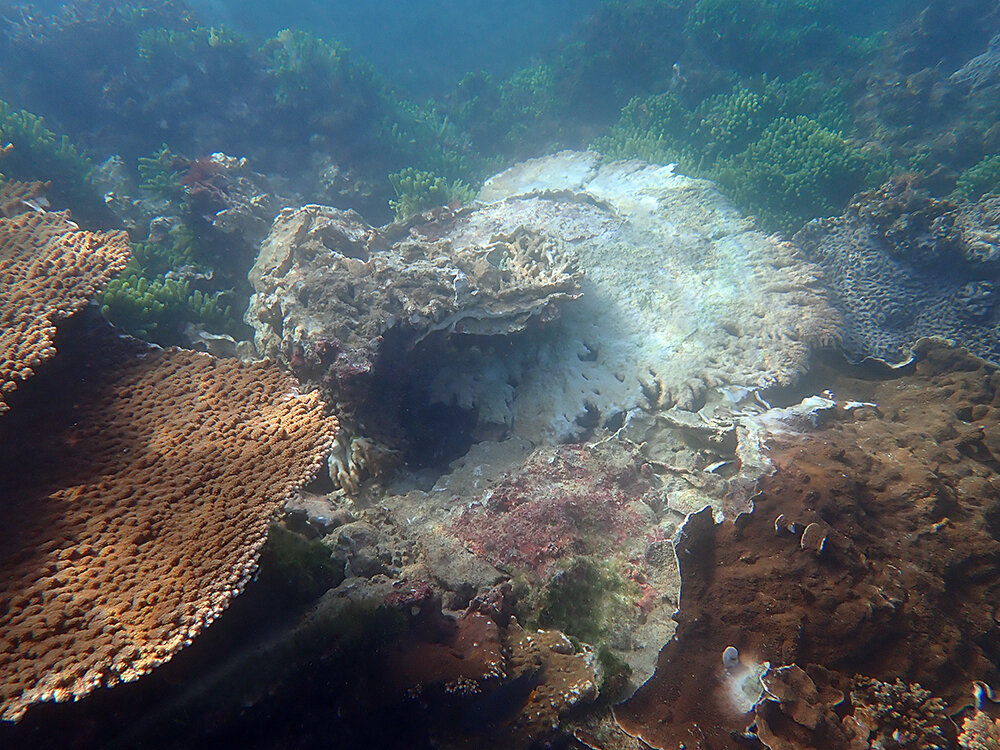
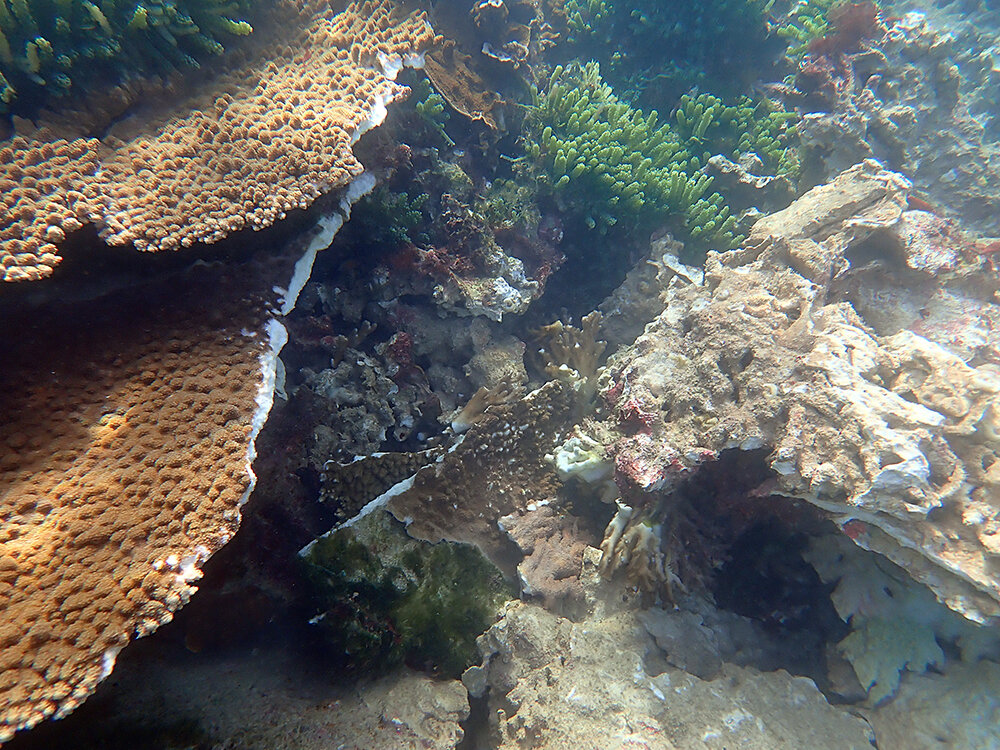
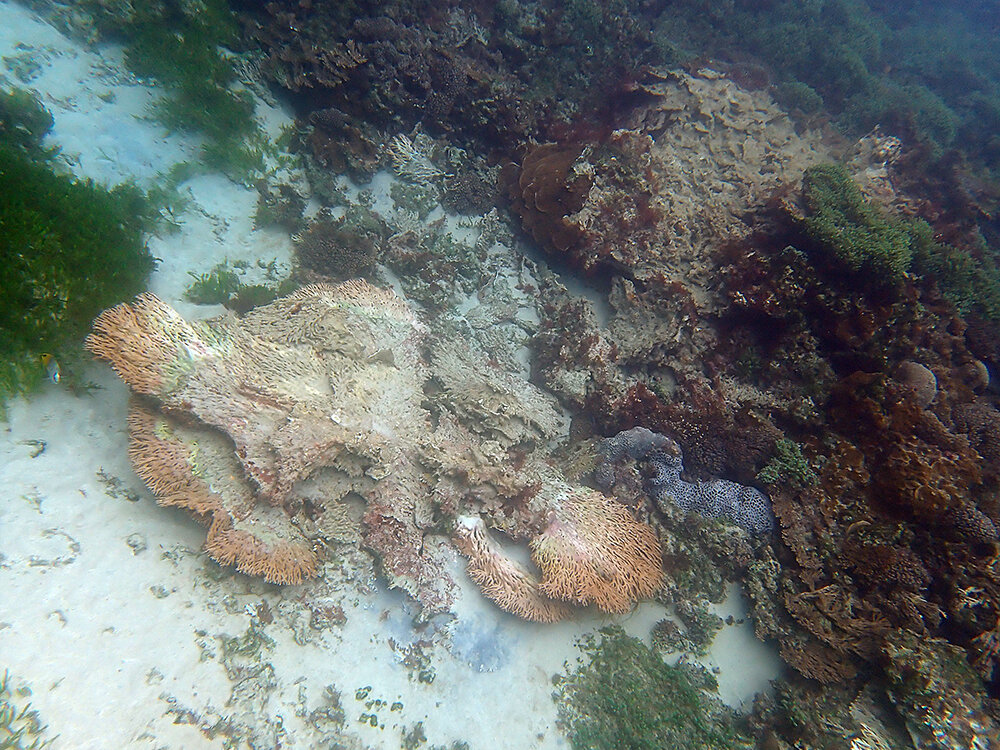
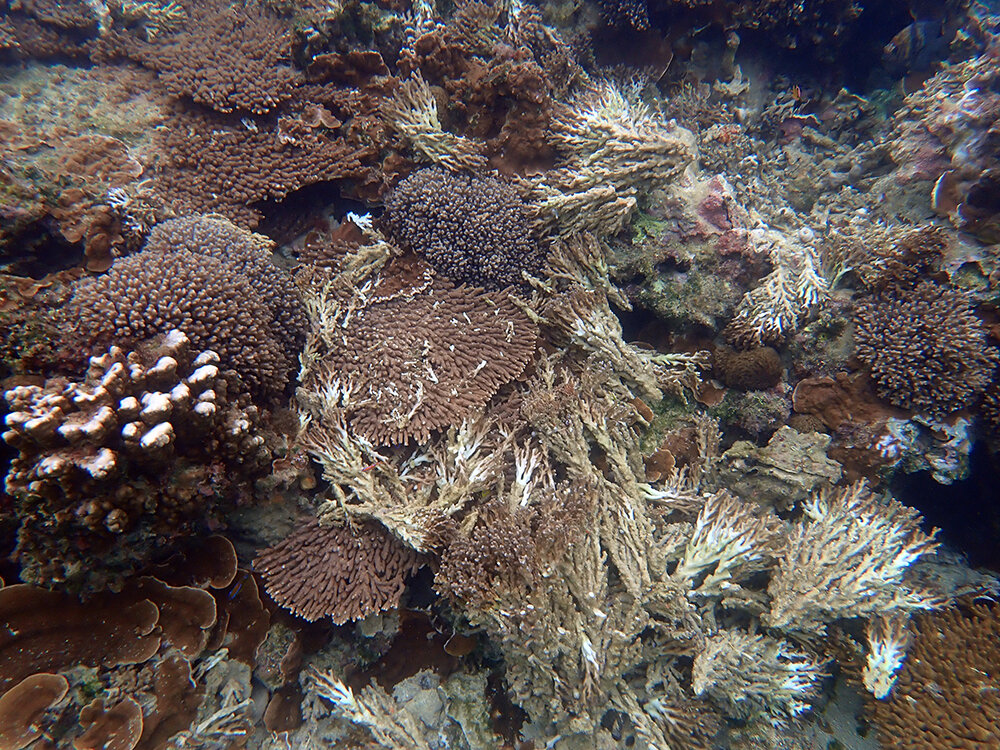
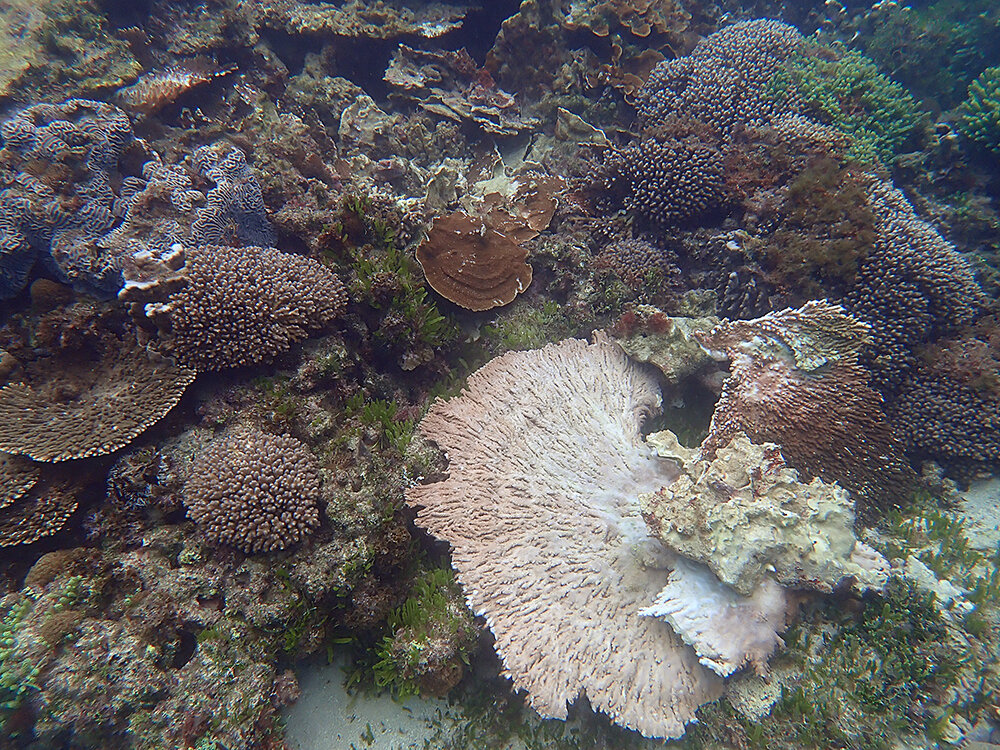
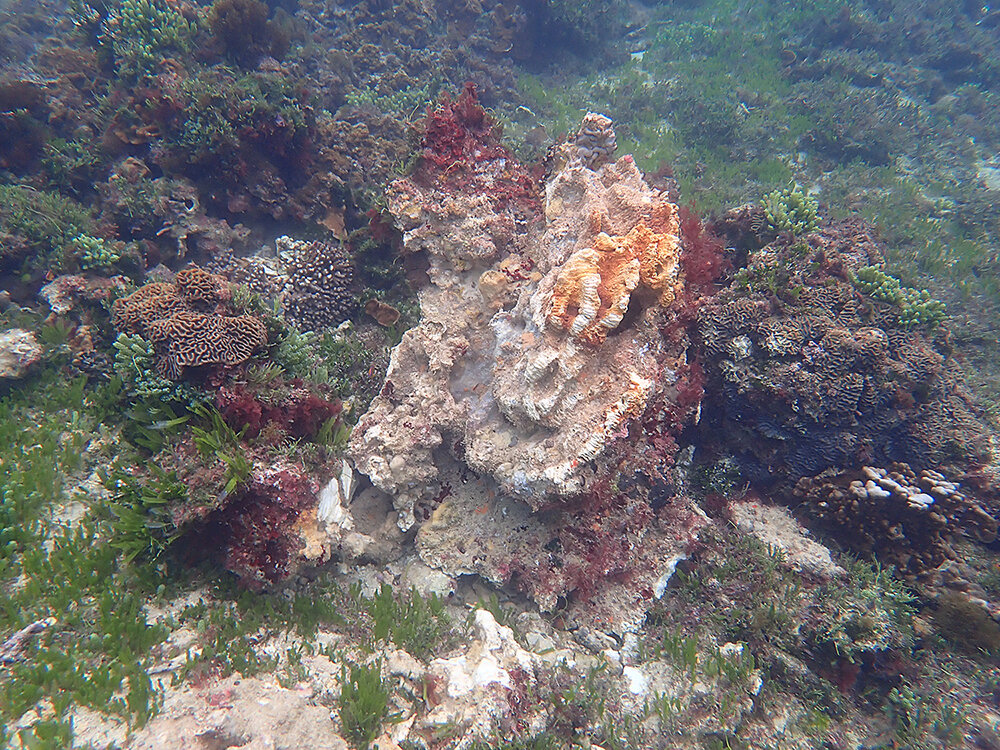

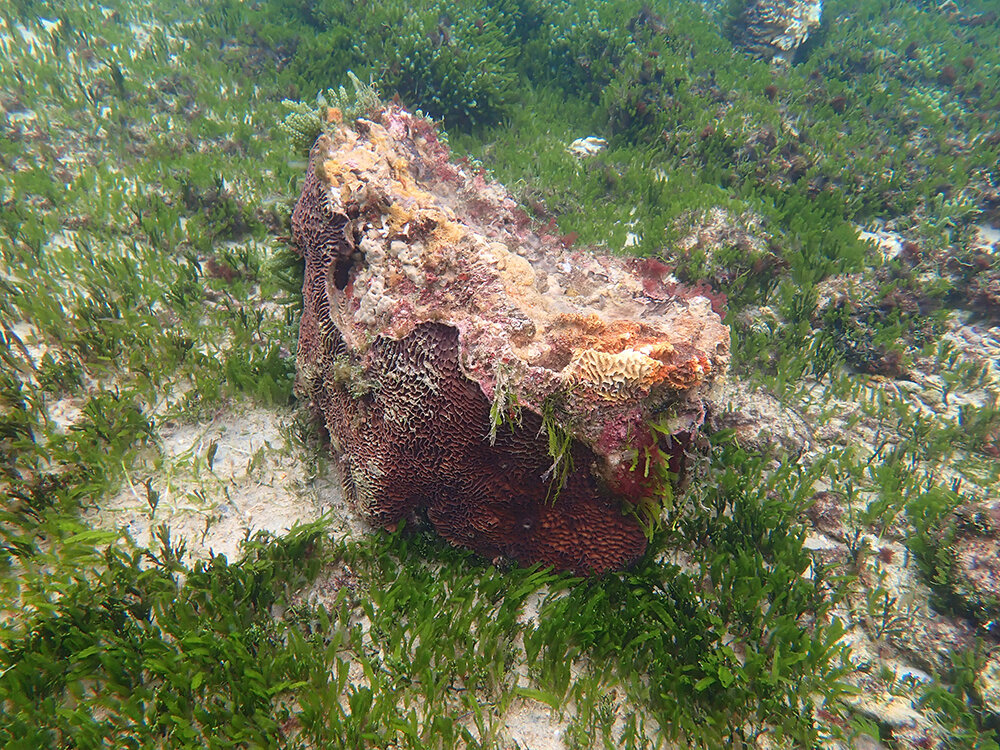
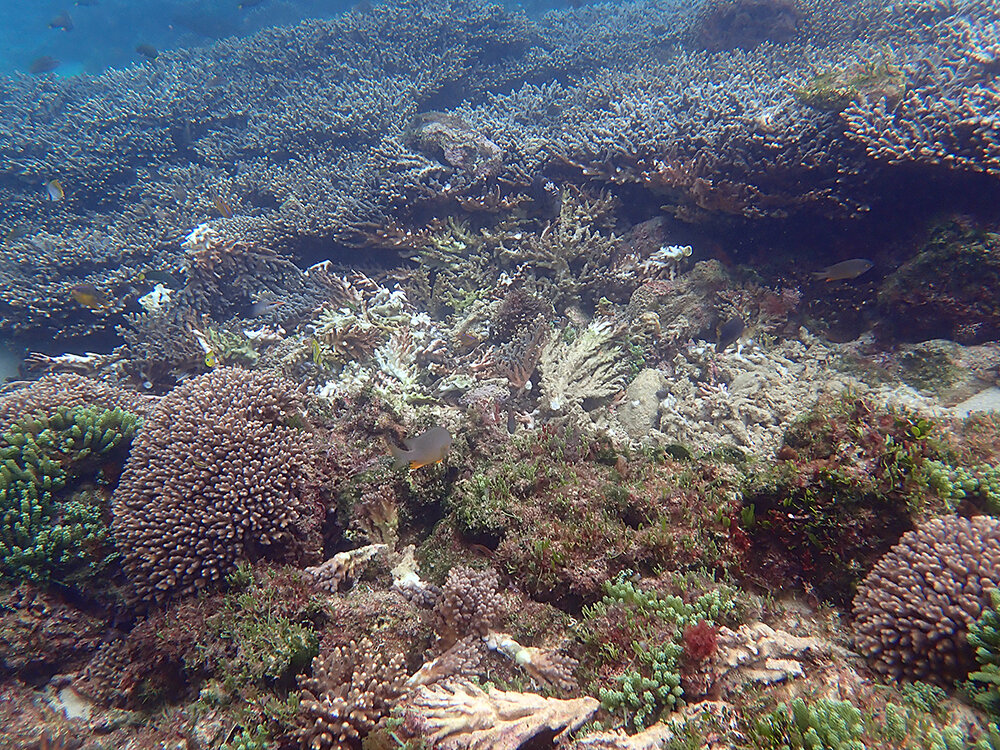
Above: Some of the destruction meted out on the reef at the end of May and beginning of June.






